
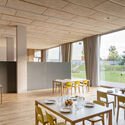
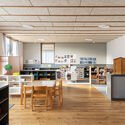
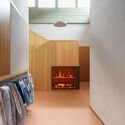
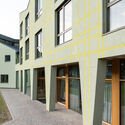

- Area:
960 m²
Year:
2023
Manufacturers: Soul, Disgusting, Billions, Ground service, Copama, Dusima, Country life, Ferplac, Gampenrieder, Lechner timber construction, Hussl, Stainless steel, Nofred, Trias OHG, Widmaier, noo.ma
-
Lead Architect:
MoDusArquitetos (Sandy Attia, Matteo Scagnol)
-
-
-
-
-
-
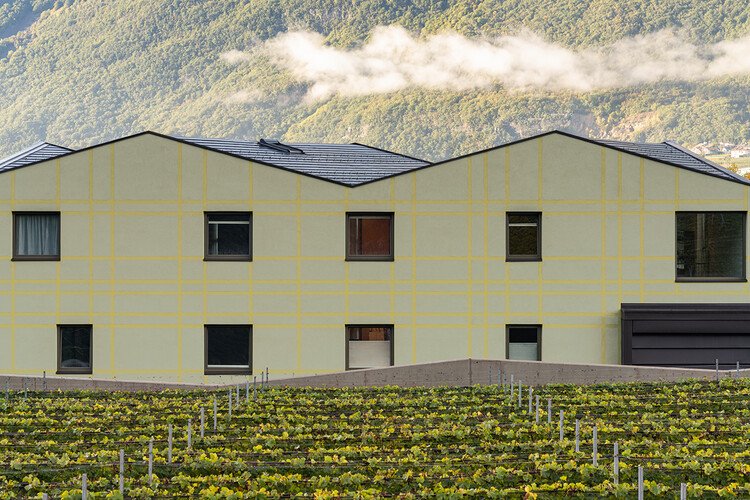
Text description provided by the architects. Architecture firm MoDusArchitects www.modusarchitects.com has unveiled the Tartan School, an extension of an existing school building located just outside the town center of Terlano, nestled in the Adige Valley between the cities of Bolzano and Merano in South Tyrol. The Tartan School is both a renovation and an intervention into an existing school—a heavy, U-shaped structure from the 1990s that was modified in the early 2000s and, like many small-town schools, combined several different programs into one. To accommodate the growing population, the municipality of Terlano decided to expand the school and opted to maintain the existing structure while adding to it.
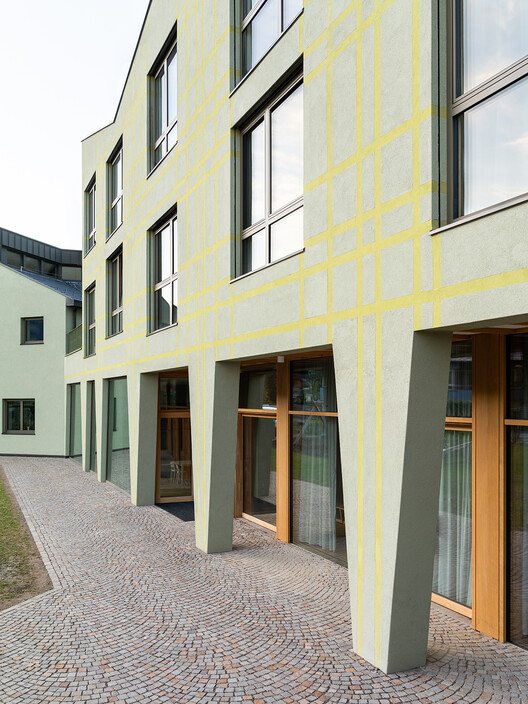
Like many small towns that line the Alpine valleys of South Tyrol, Terlano’s sprawling center pushes back the surrounding vineyards and apple orchards, which is where, at this end, the school finds itself. This adjacency to both town and countryside is registered by the school’s formal and chromatic strategies, all of which are set within a larger landscape of traditional Alpine fare of landmarks and vistas: the historic church tower to the south, the steep mountainside to the north, not to mention the medieval profiles of Neuhaus Castle looking west.
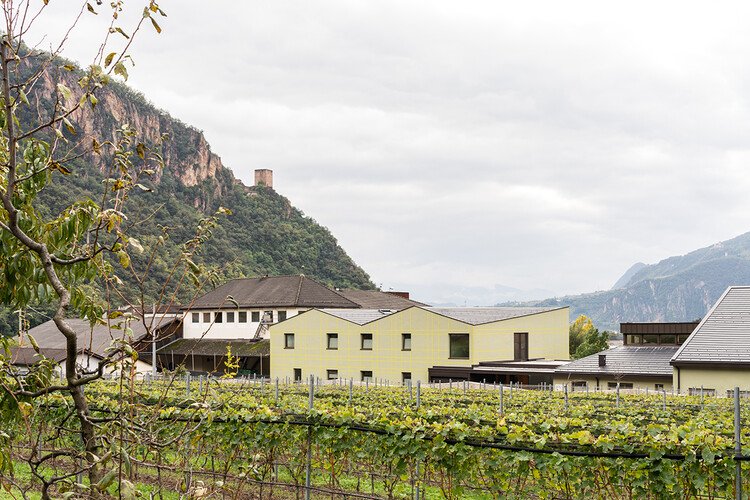
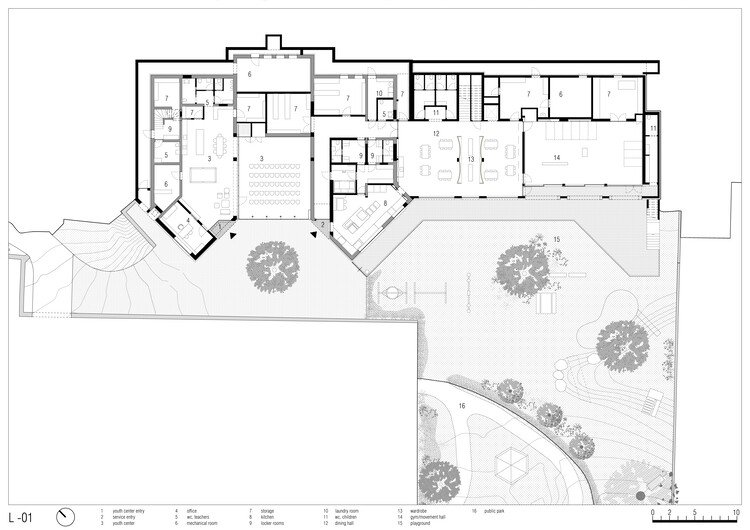
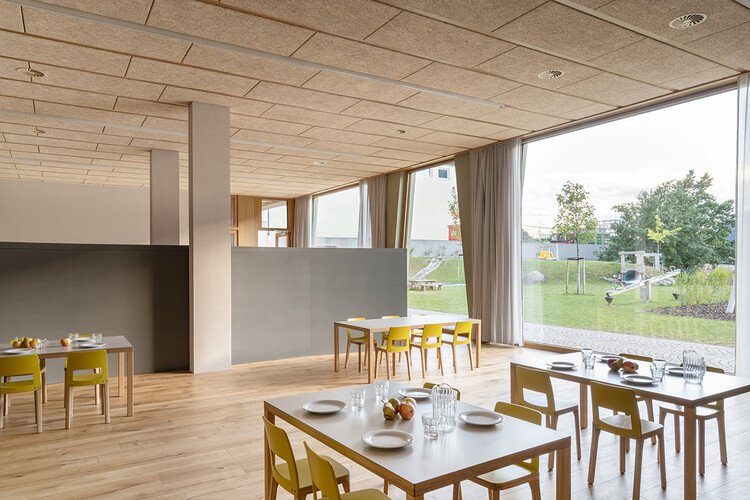
With an economy of means approach, MoDusArchitects offers new ways in which the three distinct educational programs of the Nursery, Kindergarten, and Youth Center could share fewer but more generous common spaces among themselves, while still making them available to the larger community as needed. “The school derives its name from the building’s plaster façade, which emulates the pattern of plaid fabric—a fabric that conveys a sense of warmth and familiarity,” says Sandy Attia, co-founder of MoDusArchitects with Matteo Scagnol.
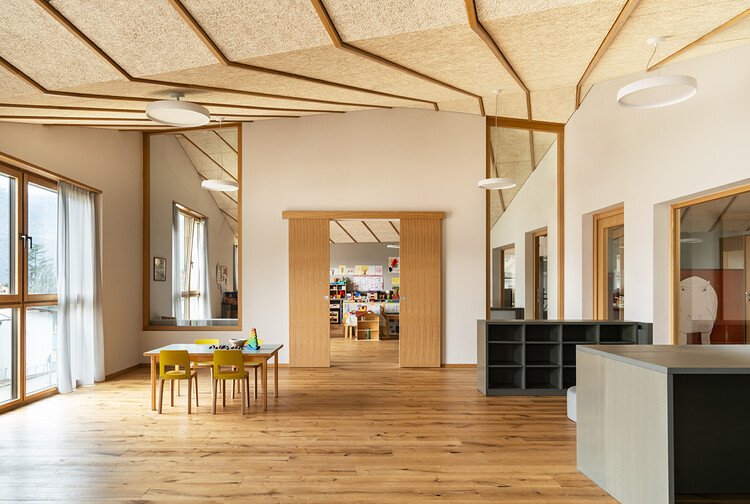
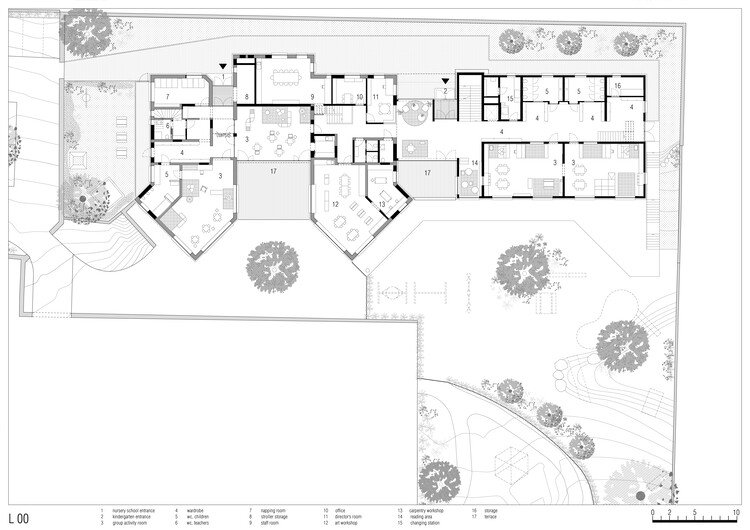
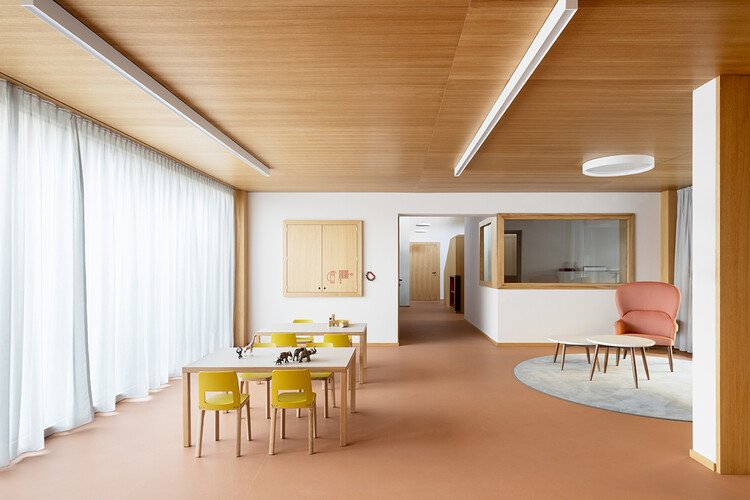
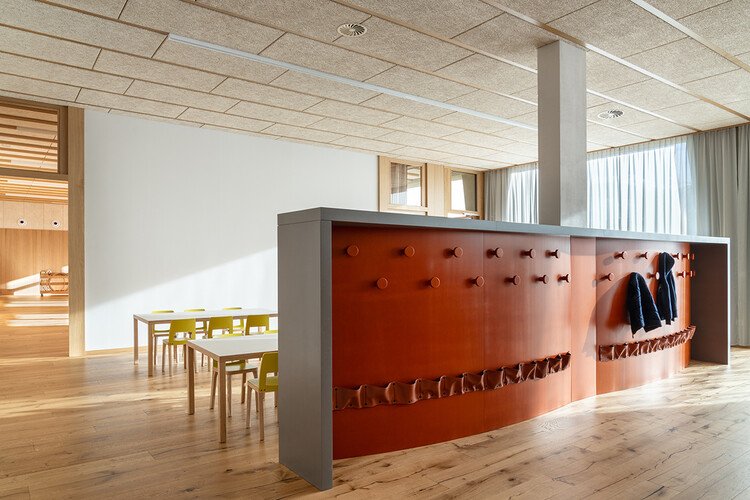
The two buildings (existing and new) negotiate the 4-metre north-south grade change of the site. The two separate entrances to the Nursery and Kindergarten are located on the upper ground level (L00) along the northern edge of the property, whilst the entrance to the Youth Centre is located on the south-facing side of the building on the lower ground level (L-01).
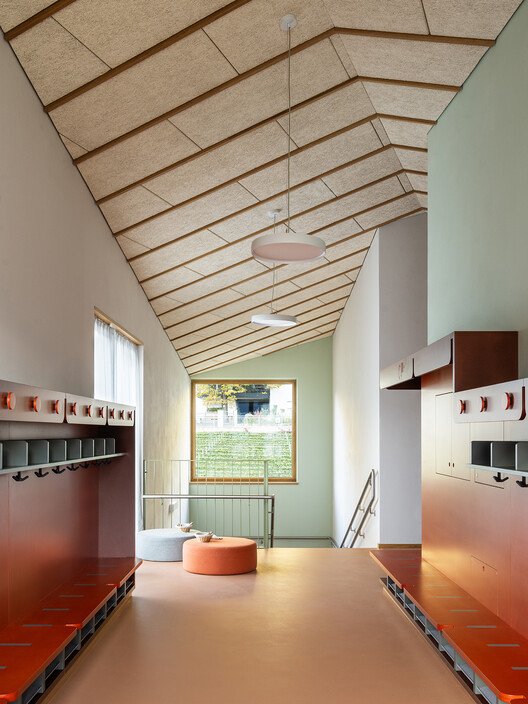
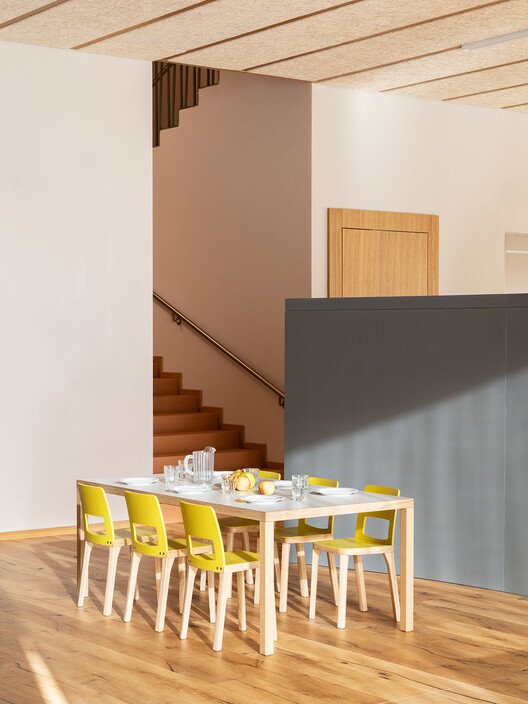
The Nursery (ages 0-3) occupies the upper ground floor (L00) of the existing building, while the Youth Center’s position remains unchanged on the lower ground floor (L-01) of the existing building. The new wing houses the various functions (group activity rooms, nap room, reading area) of the 4-classroom Kindergarten (100 children, ages 3-6) with the cafeteria and movement room/gym located on the lower ground floor (L-01) in relation to the outdoor playground. This lower floor was designed to create a common floor dedicated to all three programs so that the small auditorium (capacity 50), cafeteria and gym form a series of distinct rooms that can become part of the public realm for events, school recitals, community meetings, etc.
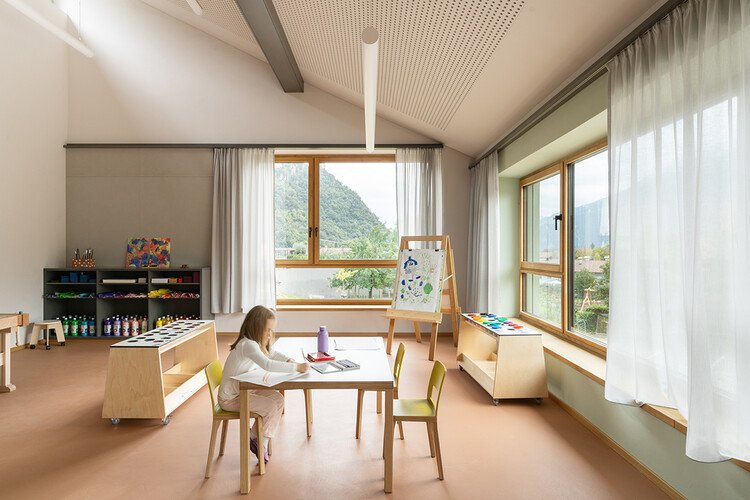
Though connected in plan and section, MoDusArchitects’ addition necessarily functions as a semantically separate, adjacent piece to the existing school’s awkward profiles; the truncated, zigzagging volume on trapezoidal legs is like a new neighbor that fits between the old school building and the large winery next door. The rough surfaces of the plaster facades are etched with a two-tone green checkerboard pattern that works in concert with the large windows that swing gently across the south facade in tune with the angular rooflines. With the windows recessed into the lower ground floor level (L-01), the trapezoidal wall cutouts become columnar supports framing a loggia that mediates the crucial indoor-outdoor movement between lunchtime and recess. The schoolyard adjoins the city’s public playground in ongoing efforts to reinforce synergies by making the most of finite resources.
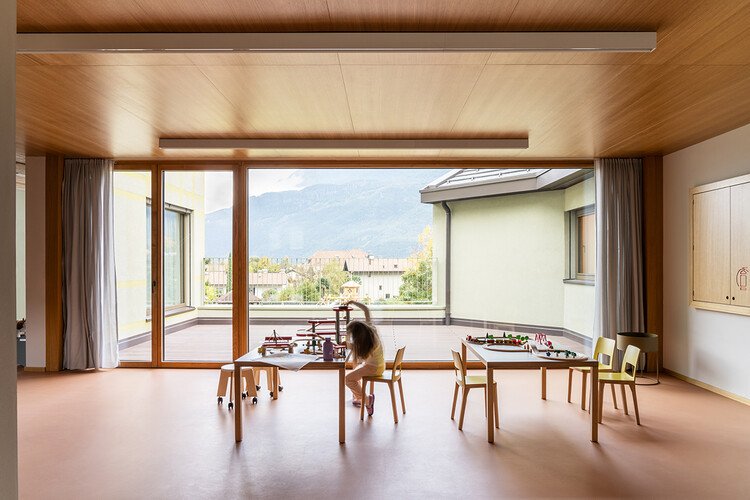
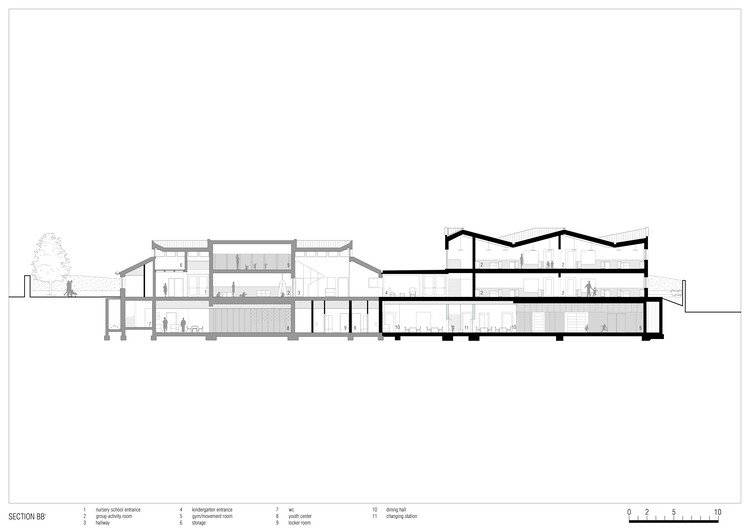
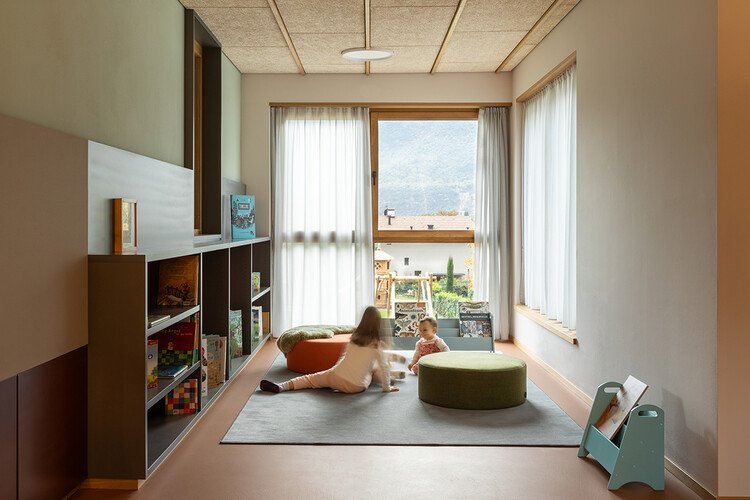
The interiors intertwine the disparate spaces of the existing structure and the new addition through a curated selection of robust materials and surface treatments. Distinguished by the brick-red resin flooring, the MDF design, custom-made furniture creates a warm tonal palette for the wardrobes and built-in reading and activity nooks found, for example, in the kindergarten’s common areas. Ceiling-mounted acoustic panels punctuated by timber profiles provide a soundscape that absorbs the noise levels of children as they move freely around the school in their conquest of space.
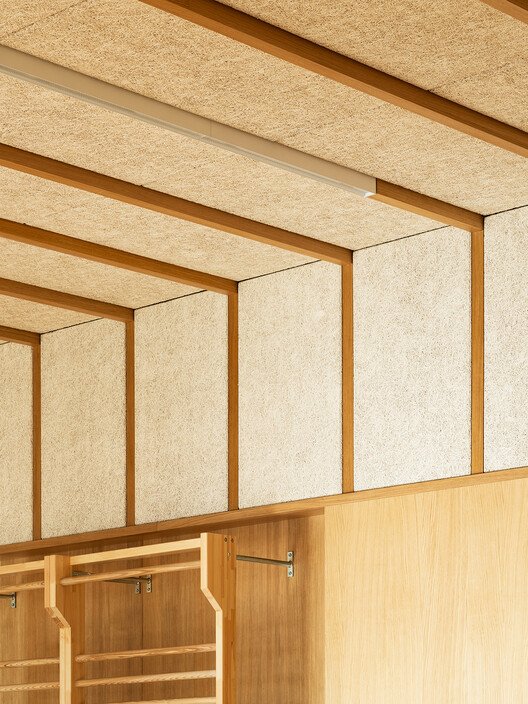

The Tartan School is a ClimateHouse A certified building; the existing school’s windows, walls and roof insulation were replaced to improve the thermal efficiency of the building envelope. In this way, the two structures had similar energy performance characteristics, allowing for more flexibility in the connections between the two structures. The Tartan School is part of MoDusArchitects’ decades of work in educational spaces, with an archive of over twenty projects in the field, ranging from completed buildings, ongoing projects, competition proposals and publications on the subject. With an interdisciplinary approach, their work delves into the reciprocal relationship between learning and learning environments, examining how the fields of pedagogy and architecture can fuel unexpected solutions to the established program of the school building.
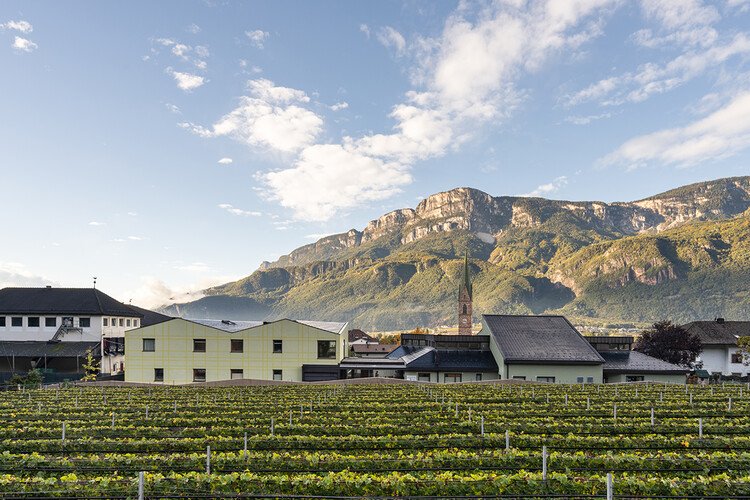
#Tartan #School #MoDusArchitects